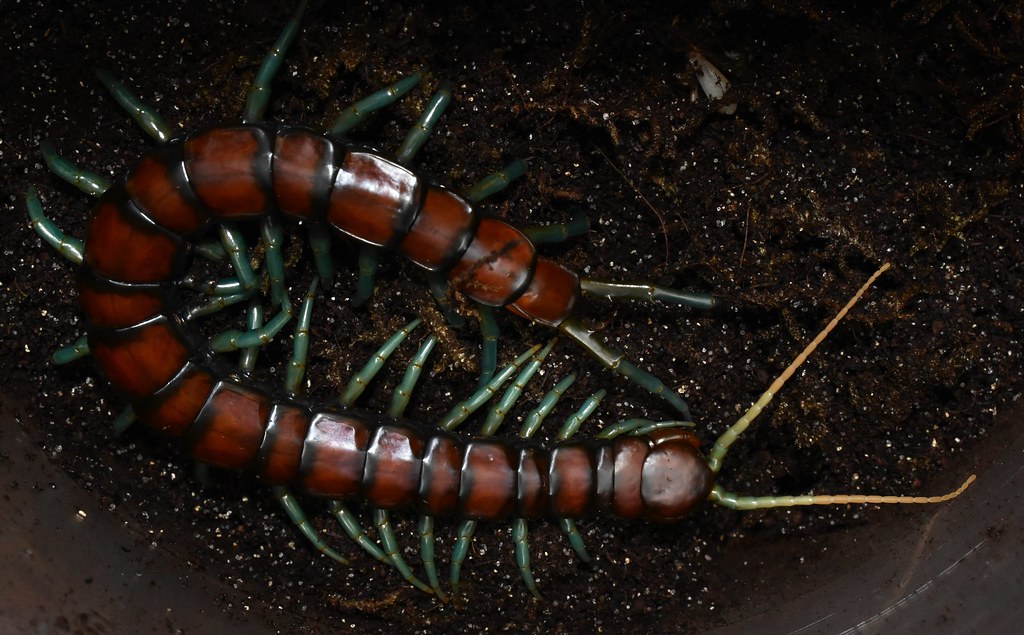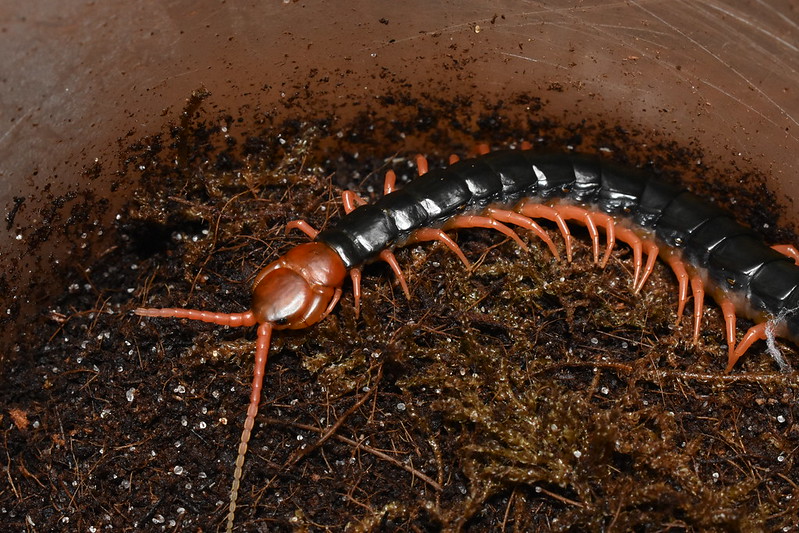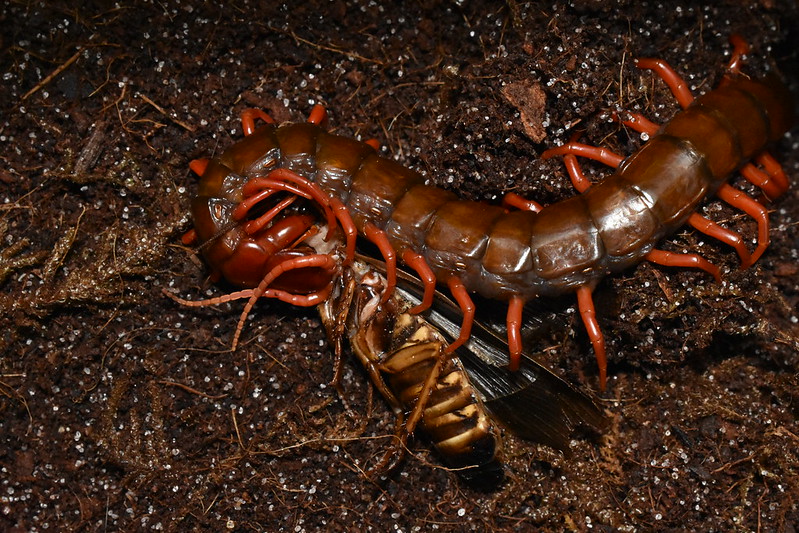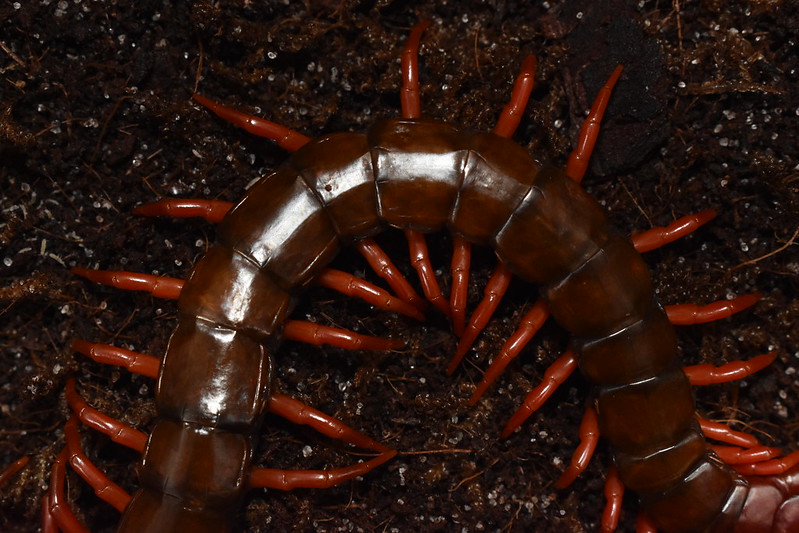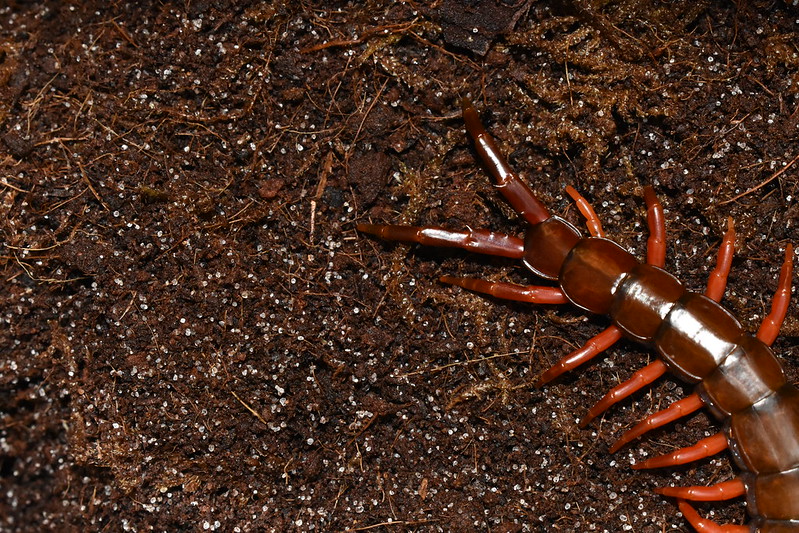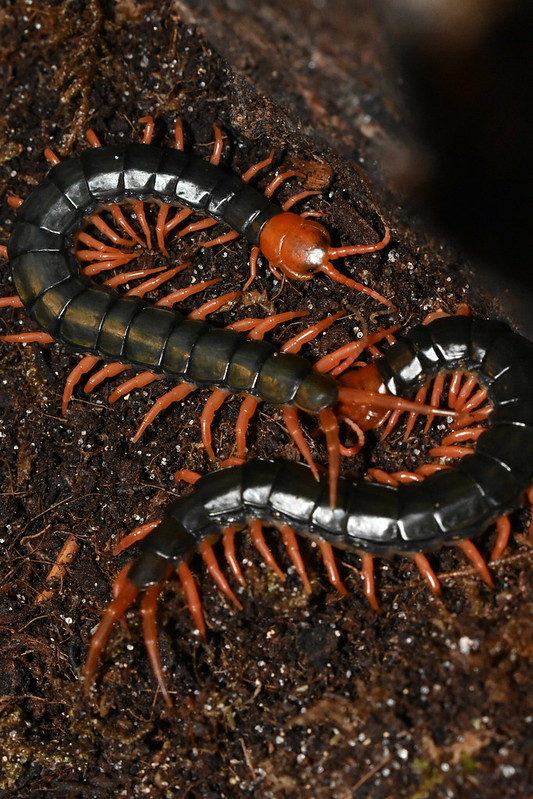LawnShrimp
Arachnoangel
- Joined
- Dec 9, 2016
- Messages
- 907
Jules stopped fasting today!
He's usually burrowed with terminals and/or antennae poking out of the substrate, like he's lying in wait for some prey to blunder by. Well today, he was invisible, but there had been some more digging done and there was a fresh hole on one side of the enclosure. I blew on said hole, and like a Lovecraftian deity summoned from the eldritch ooze, about six inches of centipede flew out of the hole and stood straight up, resting on the enclosure wall. I popped an adult female cricket in, and, as expected, the cricket is now being digested.
It seems like Jules has grown a lot since last molt, unlike the multidens that didn't really get that much bigger after its. Jules' colors are also much darker: his antennae are almost orange, his legs a dark, intense teal, and even the tergites have darkened to a moody maroon.
He's usually burrowed with terminals and/or antennae poking out of the substrate, like he's lying in wait for some prey to blunder by. Well today, he was invisible, but there had been some more digging done and there was a fresh hole on one side of the enclosure. I blew on said hole, and like a Lovecraftian deity summoned from the eldritch ooze, about six inches of centipede flew out of the hole and stood straight up, resting on the enclosure wall. I popped an adult female cricket in, and, as expected, the cricket is now being digested.
It seems like Jules has grown a lot since last molt, unlike the multidens that didn't really get that much bigger after its. Jules' colors are also much darker: his antennae are almost orange, his legs a dark, intense teal, and even the tergites have darkened to a moody maroon.


